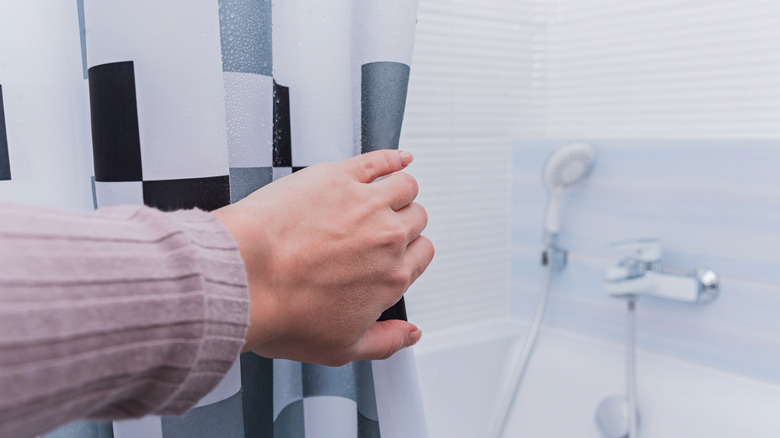The Huge Bathroom Mistake That Makes Mildew Grow On Your Shower Curtain
Have you ever stepped into the shower only to notice those telltale spots creeping along your curtain? The first step is to look up mold vs. mildew to see what's growing in your bathroom. Mildew is one of the most common bathroom issues, and it seems to return no matter how often you scrub. The mistake many people make isn't necessarily poor cleaning habits — it's poor ventilation. When you leave the bathroom unventilated, all the steam and moisture from your shower lingers, creating the perfect environment for mildew to thrive on your shower curtain.
Mildew forms on flat surfaces when damp fabric or plastic stays wet for too long without a chance to dry. Since shower curtains are constantly exposed to water, they're one of the first bathroom items to show the effects of trapped humidity. Beyond just being unsightly, mildew can carry odors, spread to other surfaces, and make your bathroom feel gross.
The good news is that you can stop it in its tracks with proper airflow. By simply cracking a bathroom window or flipping on the exhaust fan during and after your shower, you can keep moisture levels low enough to prevent mildew from settling in. All you really need is a reliable vent or open window, plus a little attention to making sure your shower curtain dries fully between uses. These small changes will make a huge difference in keeping your bathroom fresh and your curtains mildew-free. And if you want to take it a step further, you could invest in a mildew-resistant shower curtain.
Open your bathroom windows to reduce mildew on your shower curtain
To prevent mildew, start making ventilation a non-negotiable step in your shower routine. First, open the bathroom window if you have one, and run your exhaust fan during and after your shower. Second, pull your shower curtain closed rather than bunched to one side (this allows it to dry evenly instead of trapping moisture in the folds). These simple steps work because the fabric or plastic needs air circulation to dry completely, which removes the damp conditions that mildew feeds on.
If you're trying to tackle current mildew spots, natural cleaning hacks can help restore your shower curtain without harsh chemicals. One option is white vinegar: mix equal parts vinegar and water in a spray bottle, spritz the curtain, and let it sit for a few hours before scrubbing gently with a soft-bristle brush. Once clean, soak the curtain in a tub of hot, salty water to kill lingering spores, and then rinse and let it dry thoroughly.
Baking soda is another useful cleaning hack that is worth trying. Sprinkle it directly on the problem area, let it sit for a few minutes, and then scrub with a damp sponge. This gentle abrasive helps lift mildew without damaging the curtain. To tackle heavy mildew buildup, combine both methods. By upping your ventilation and being consistent with your cleaning, you'll extend the life of your shower curtain and keep your bathroom looking (and smelling) its best.

